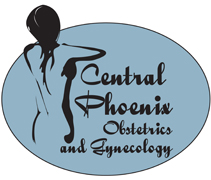 Sudden cardiac arrest (SCA)
Sudden cardiac arrest (SCA)
- An emergency
- The sudden, unexpected loss of heart function, breathing and consciousness.
- If not treated immediately, it causes sudden cardiac death.
- With fast, appropriate medical care, survival is possible.
- With every minute that passes, the chances of surviving SCA drop rapidly.
Causes
- Previous heart attack (75 percent of SCD cases are linked to a previous heart attack)
- Coronary artery disease (80 percent of SCD cases are linked with this disease)
- Heart disease
- Family history of sudden cardiac arrest or SCD
- Personal or family history of certain abnormal heart rhythms
- History of congenital heart defects or blood vessel abnormalities
- Significant changes in blood levels of potassium and magnesium
- Obesity
- Diabetes
- Recreational drug abuse
- Some medications
Symptoms
Sudden cardiac arrest symptoms are immediate and drastic and include:
- Sudden collapse
- No pulse
- No breathing
- Loss of consciousness
What to Do
- Call 911 (or the emergency number in your area) or get someone to call
- Perform CPR or chest compressions if you’ve been trained in CPR
- Use a portable defibrillator –no training needed
-
- Open the lid and follow instructions
Automated external defibrillators (AEDs)
- Special defibrillators created for untrained bystanders.
- Portable devices often are found in public places, such as shopping malls, golf courses, businesses, airports, airplanes, casinos, convention centers, hotels, sports venues, and schools.
- AEDs are programmed to read the heart rhythm and give an electric shock if they detect a dangerous arrhythmia,
- Will not give a shock to someone who has fainted or is otherwise just unconscious without cardiac arrest.
- Give cardiopulmonary resuscitation (CPR) until a defibrillator arrives.
Homework
Locate the defibrillator(s) at your job and in the public places you go often.
Links
AED demo video
https://www.youtube.com/watch?v=BAWGjNAj_vA
CPR classes

